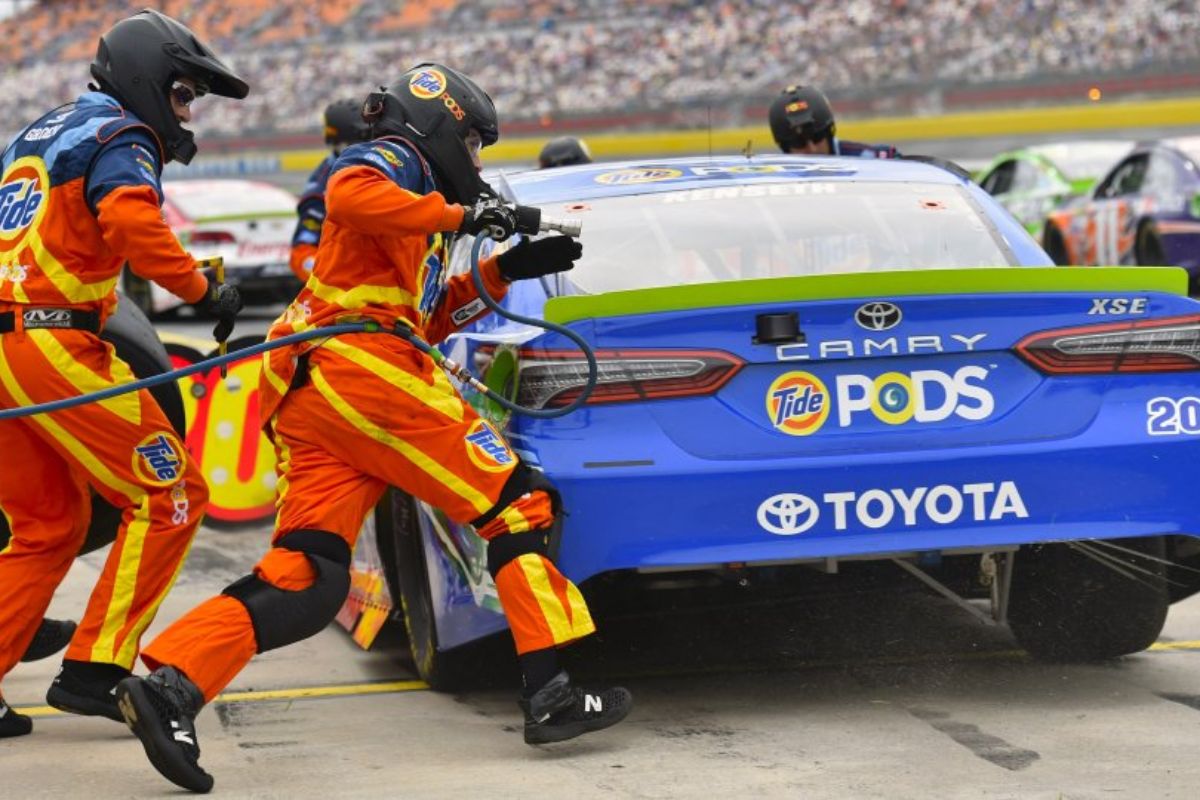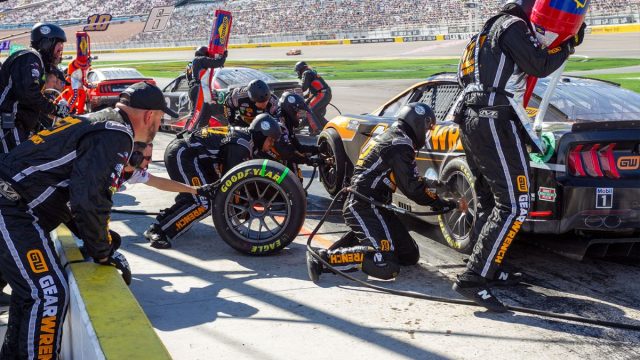Decoding NASCAR’s Pit Crew Mystery: In the fast-paced sport of NASCAR, pit stops can often make or break a race. The skills and precision of a pit crew can significantly impact a driver’s performance on the track. However, the intricacies of what goes on behind the scenes, the training, coordination, and split-second decisions made during a pit stop remain a mystery to many fans.
What if there were secrets to be unveiled? Stay tuned as we uncover the hidden strategies and techniques that separate the average pit crew from the extraordinary in NASCAR’s high-stakes environment.
The Crucial Role of Pit Crews in NASCAR
The indispensable role of pit crews in NASCAR is fundamental to a team’s success on the racetrack, influencing race outcomes through precision, speed, and strategic execution. In the high-stakes sport of NASCAR racing, where every second counts, pit crews are the unsung heroes who can make or break a team’s chances of victory. With the introduction of the Next-Gen car, the significance of passing competitors on pit road has become even more apparent, placing additional pressure on pit crews to perform flawlessly.
Two-time NASCAR Cup champion Kyle Busch has emphasized the critical nature of having a skilled pit crew, shedding light on the challenges involved in assembling and maintaining one. A pit crew’s ability to execute lightning-fast tire changes, refuel the car with precision, and make strategic adjustments can give their driver a competitive edge on the track. The synergy between driver and pit crew is a finely-tuned partnership that requires seamless coordination and split-second decision-making, illustrating the intricate coordination of man and machine in the pursuit of victory on the NASCAR circuit.

Challenges in Assembling an Effective Pit Crew
Amidst the competitive landscape of NASCAR, the process of assembling an effective pit crew presents teams with a myriad of challenges that demand precision and strategic maneuvering. Kyle Busch, in a pre-race media briefing at Phoenix, shed light on the complexities involved. Drawing parallels to football player selection, Busch categorized individuals into ‘A,’ ‘B,’ and ‘C’ groups. He highlighted the difficulty in attracting top talent from the ‘A’ group due to existing contractual obligations.
This obstacle often leads teams to scout from the ‘practice squad,’ hoping to unearth hidden gems. The challenge lies not only in identifying skilled individuals but also in fostering seamless teamwork and synchronization among the crew members. Teams must navigate contractual constraints, talent availability, and the need for a cohesive unit capable of lightning-fast pit stops.
Assembling a pit crew is akin to solving a complex puzzle where each piece must fit perfectly to achieve optimal performance on race day.
RCR’s Struggles and Efforts to Enhance Pit Crew Performance
Richard Childress Racing (RCR) grapples with ongoing challenges related to pit crew performance enhancement and seeks to overcome them through strategic adjustments and a relentless pursuit of excellence. Despite recent setbacks, RCR remains steadfast in their commitment to improving their pit crew’s efficiency and effectiveness.
Here are four key strategies that RCR is implementing to enhance their pit crew performance:
- Talent Evaluation: RCR is conducting thorough evaluations to identify and recruit top-tier talent capable of delivering consistent and high-quality performances under pressure.
- Training and Development: Implementing rigorous training programs to enhance the skills and coordination of the pit crew members, ensuring they are well-prepared for the demands of NASCAR pit stops.
- Performance Analysis: Utilizing data analytics and performance metrics to identify areas of improvement and track the progress of the pit crew over time.
- Logistical Optimization: Addressing logistical challenges posed by RCR’s facility location in Welcome, North Carolina, to streamline operations and maximize efficiency in pit crew management.

News in Brief
In the world of NASCAR, pit stops are a critical factor influencing race outcomes. The importance of skilled pit crews has been underscored by two-time Cup champion Kyle Busch, emphasizing their role in the high-stakes racing environment. As the Next-Gen car intensifies the significance of pit stops, the synergy between driver and pit crew becomes a key partnership for success. Assembling an effective pit crew presents challenges, with Busch comparing talent selection to football player categorization. Richard Childress Racing (RCR) acknowledges struggles in pit crew performance and outlines four strategies to enhance efficiency, including talent evaluation, training, performance analysis, and logistical optimization. RCR remains committed to overcoming challenges and striving for excellence in NASCAR pit stops.
Our Reader’s Queries
Q. What is the importance of the NASCAR pit crew?
A. Pit stops stand out as crucial elements in the realm of motorsports, often holding the key to victory. The performance of a pit crew on pit road can be the determining factor between clinching the race win or settling for second place. Intensive training becomes paramount for crew members, emphasizing physical fitness to ensure they are prepared to execute their tasks swiftly and with precision. The training regimen reflects the dedication of pit crews in their pursuit of excellence on race day.
Q. How does NASCAR determine pit positions?
A. The placement of the garage area, whether on pit lane or in a distinct location, varies depending on the circuit. Across most racing series, the arrangement of teams’ pit boxes is typically determined by factors such as points standings, race results, or previous qualifying outcomes. This allocation is established before the commencement of the race, ensuring an organized and strategic positioning of teams within the pit area.
Q. What is the leader of a pit crew called?
A. The crew chief takes on the pivotal role of orchestrating the pit crew’s efforts, engaging with the driver, and simultaneously analyzing the televised race broadcast through flat-screen monitors strategically positioned throughout the pit box. This multifaceted responsibility requires a keen ability to manage on-the-ground operations, maintain effective communication with the driver, and stay attuned to the race dynamics unfolding on the screens for informed decision-making.
ALSO READ: Kyle Busch’s Pit Crew Frustration: Is RCR’s Pit Road Strategy a Bust?
